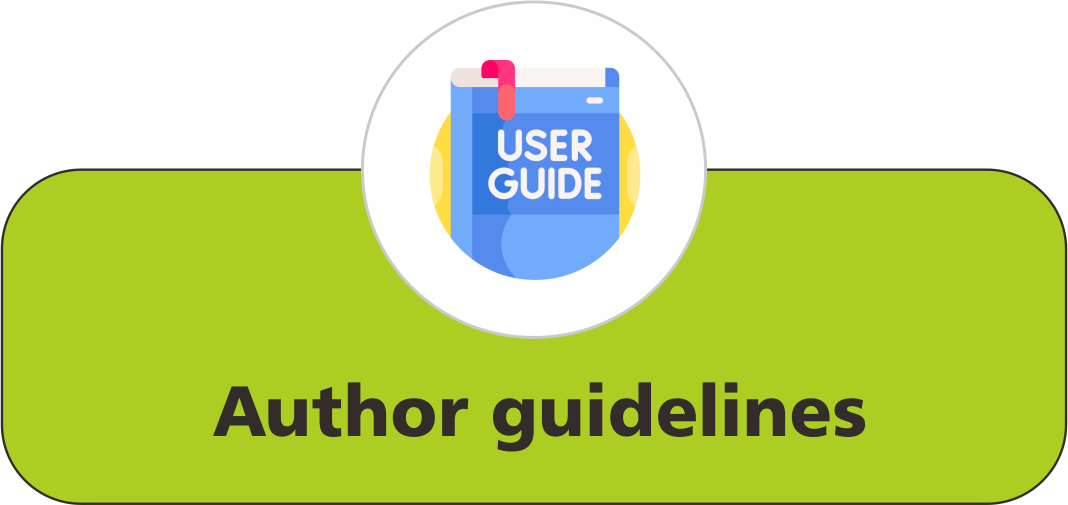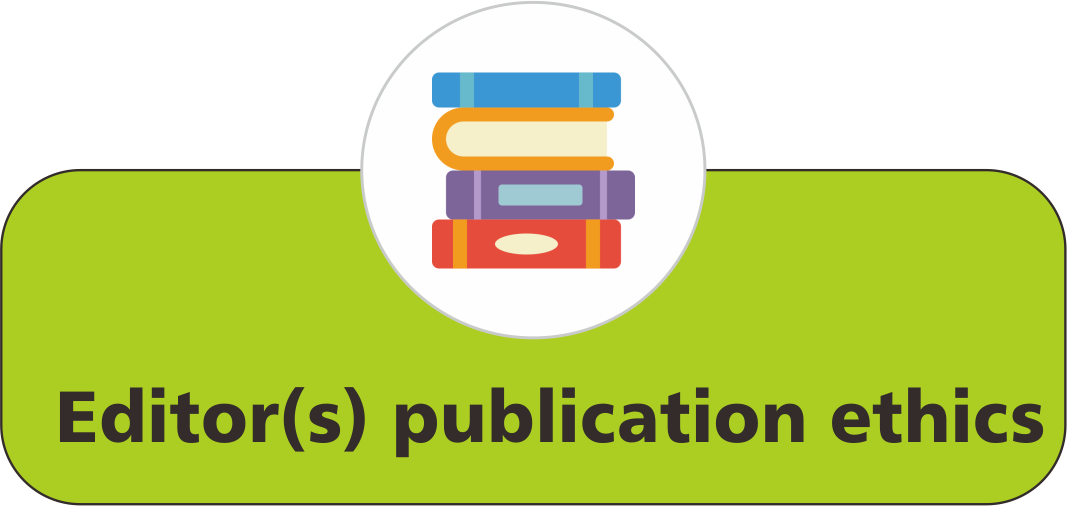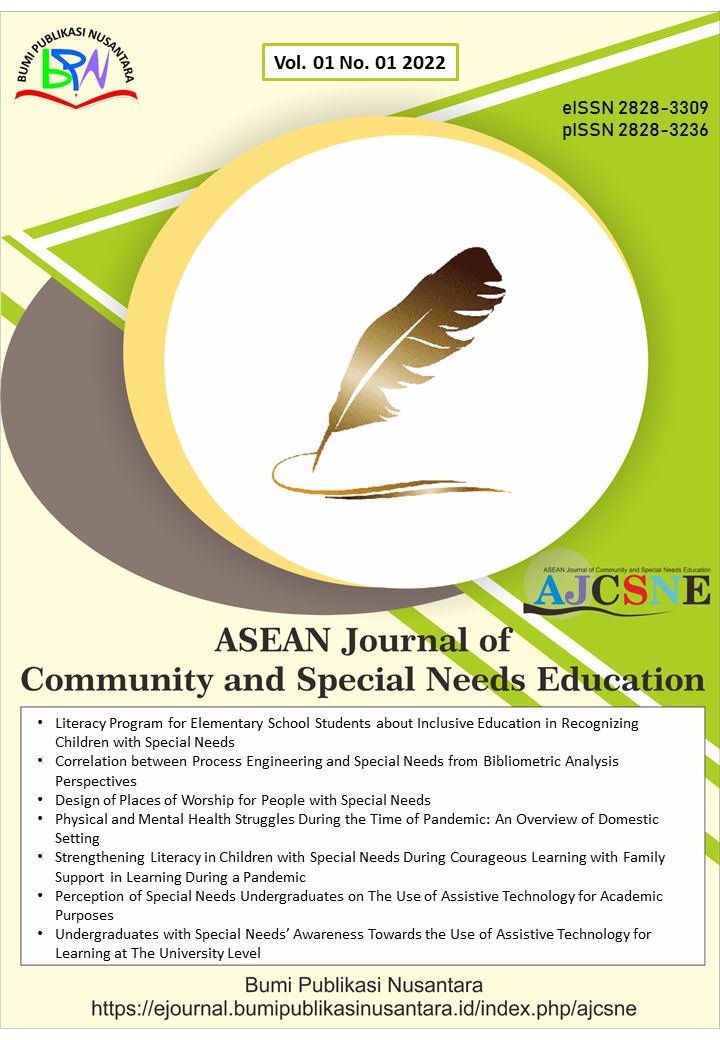Behaviors of Concern to Special Education Teachers in Their Classroom: Class Characteristics and Class Composition Predictors
 ),
),
(1) Universitas Sultan Ageng Tirtayasa
 Corresponding Author
Corresponding Author
Abstract
The purpose of this study was to find out the behaviors of students with special needs that were a concern for special school teachers in the classroom and how much help teachers needed to overcome these behavioral concerns. A total of twenty-nine special school teachers have participated by completing a questionnaire about the level of concern and support needed about students’ behaviors in the classroom. Data were analyzed using SPSS. The results show that teachers are concerned most about distractibility and need much support in dealing with distractibility. Special school teachers could place students with the same kind of disabilities in the same class to minimize concerning behaviors and support needs. If teachers or students in special schools are limited, teachers can teach mixed-level classes. However, the classroom still consists of the same kind of disabled students.
Keywords
References
Beaudoin, K., Mihic, S. S., and Darko, L. (2018). Croatian preschool teachers' self-perceived competence in managing the challenging behavior of children. Center for Educational Policy Studies Journal, 8(2), 123-138.
Beaudoin, K., Mihić, S. S., and Lončarić, D. (2016). Behaviors of concern to Croatian primary school teachers. Journal of International Special Needs Education, 19(2), 69-80
Buaraphan, K., Inrit, B., and Kochasila, W. (2018). Current policy and practice concerning multigrade teaching in Thailand. Kasetsart Journal of Social Sciences, 39(3), 496-501.
Fowler, S. A., Coleman M. R. B., and Bogdan W. K. (2019). The State of the special education profession survey report. Teaching Exceptional Children, 52(1), 8-29.
Galton, M., Lai, K. C., and Chan, K. W. (2019). Implementing small class teaching in East Asia: problems and possibilities. International Journal of Educational Research, 96, 164-172.
Kremer, K. P., Flower, A., Huang, J., and Vaughn, M. G. (2016). Behavior problems and children's academic achievement: A test of growth-curve models with gender and racial differences. Children and Youth Services Review, 67, 95-104.
Linh, D. Q., Huyen, P. M., Hanh, N. H., Lan, D. T. M., and Nhung, D. T. C. (2021). Using a student facilitator in group activities of a large class size: an observational study. Modern Perspectives in Language, Literature and Education, 8, 143-157.
Mahlo, D. (2017). Teaching learners with diverse needs in the foundation phase in Gauteng province, South Africa. SAGE Open, 7(1), 1-9.
Naparan, G. B., and Alinsug, V. G. (2021). Classroom strategies of multigrade teachers. Social Sciences and Humanities Open, 3(1), 100109.
Närhi, V., Kiiski, T., and Savolainen, H. (2017). Reducing disruptive behaviours and improving classroom behavioural climate with class‐wide positive behaviour support in middle schools. British Educational Research Journal, 43(6), 1186-1205.
Ronksley-Pavia, M., Barton, G. M., and Pendergast, D. (2019). Multiage education: an exploration of advantages and disadvantages through a systematic review of the literature. Australian Journal of Teacher Education (Online), 44(5), 24-41.
Shareefa, M. (2021). Using differentiated instruction in multigrade classes: a case of a small school. Asia Pacific Journal of Education, 41(1), 167-181.
Stephenson, J., Linfoot, K., and Martin, A. (2000). Behaviors of concern to teachers in the early years of school. International Journal of Disability, Development and Education, 47(3), 225-235.
Article Metrics
Abstract View : 1512 times
: 1512 times Download : 374 times
Download : 374 times
Refbacks
- There are currently no refbacks.
Copyright (c) 2022 Bumi Publikasi Nusantara

This work is licensed under a Creative Commons Attribution-ShareAlike 4.0 International License.







